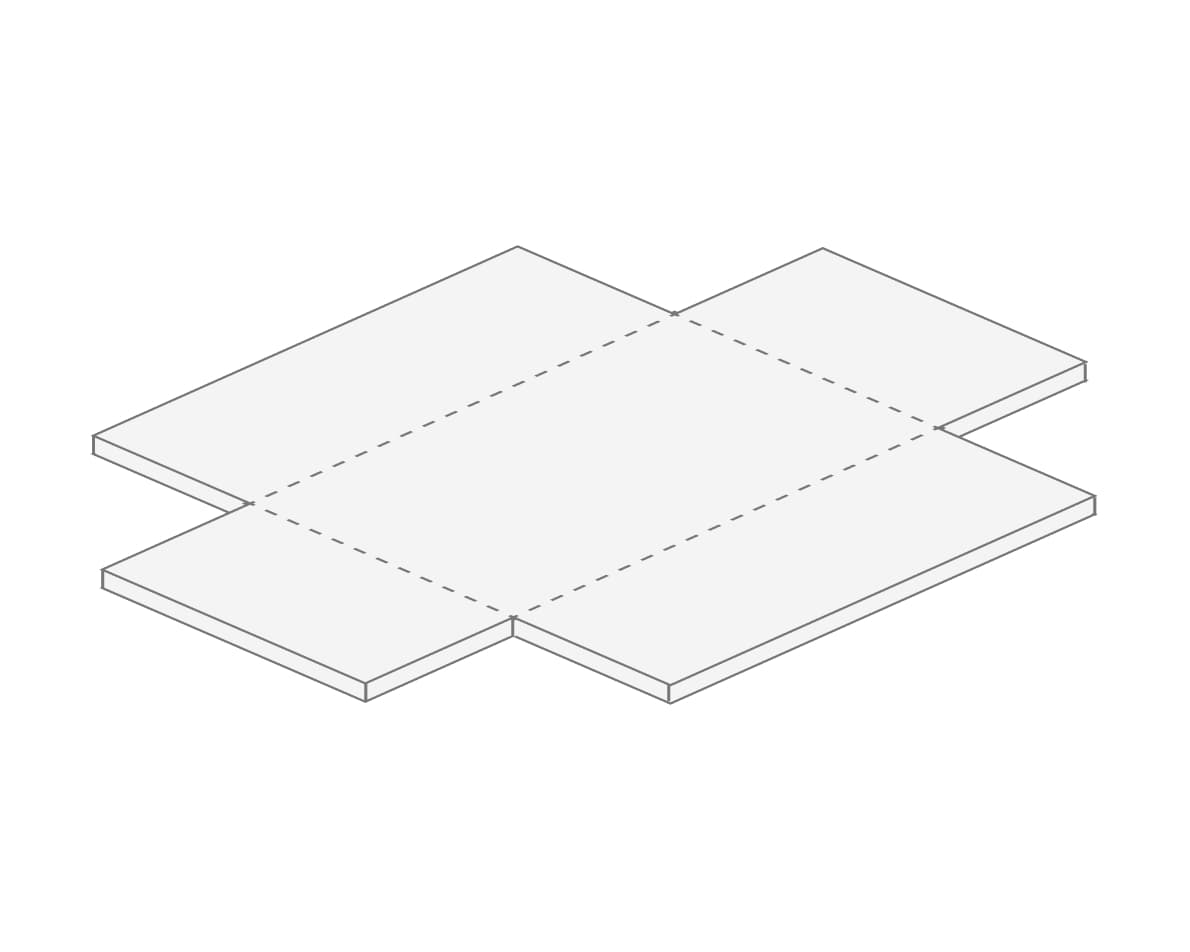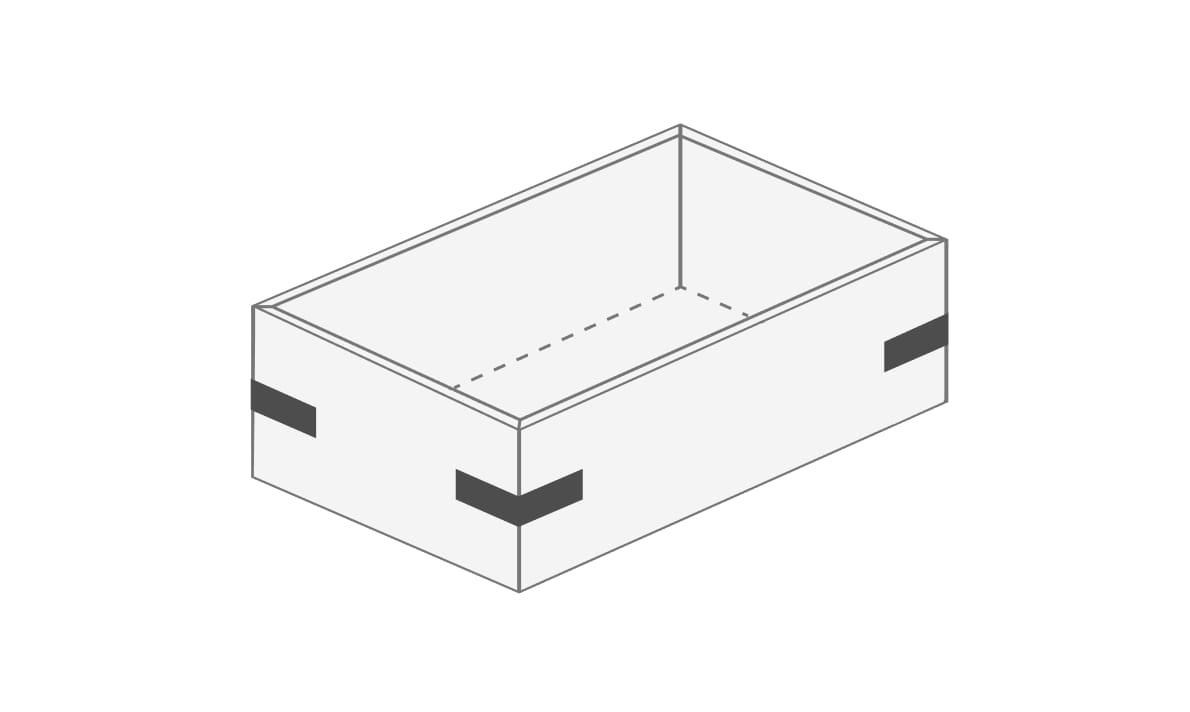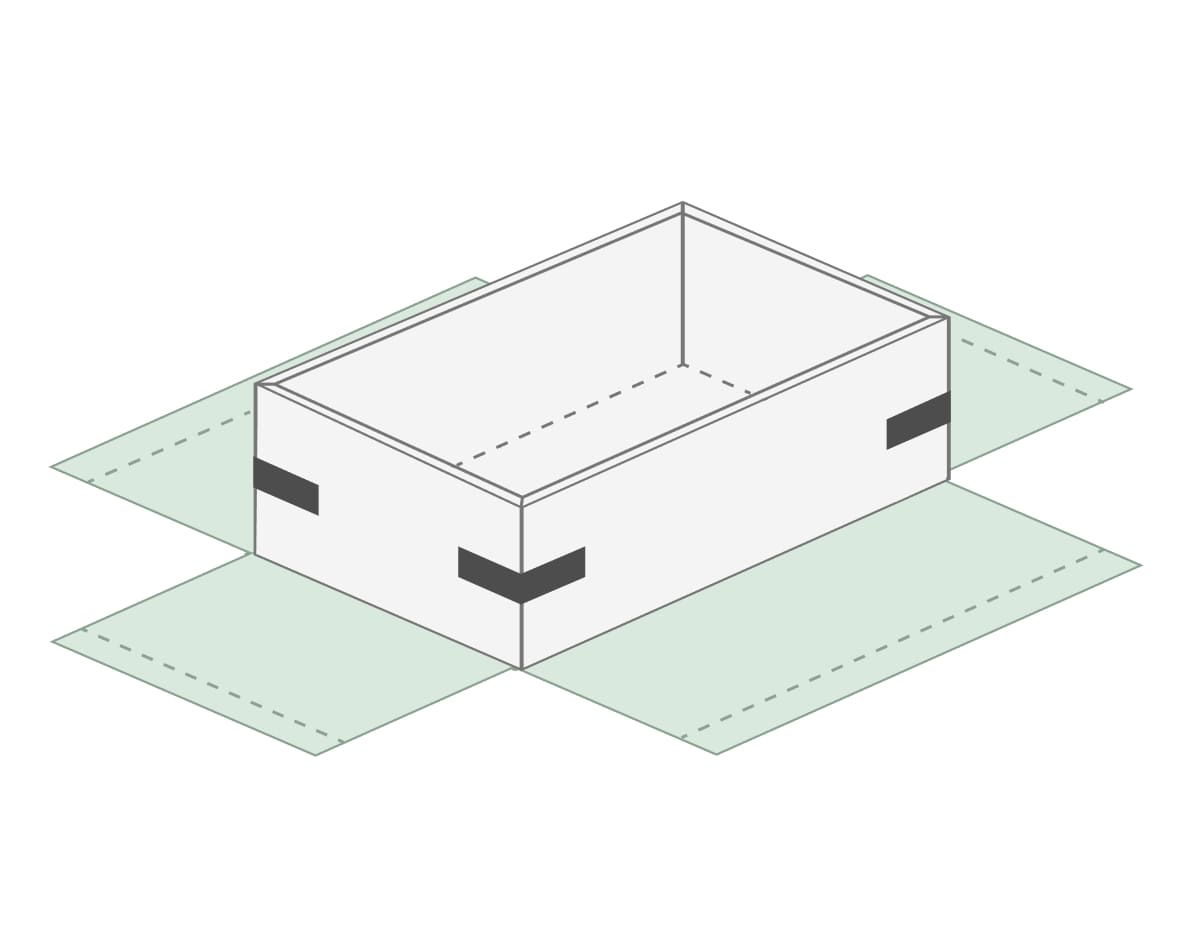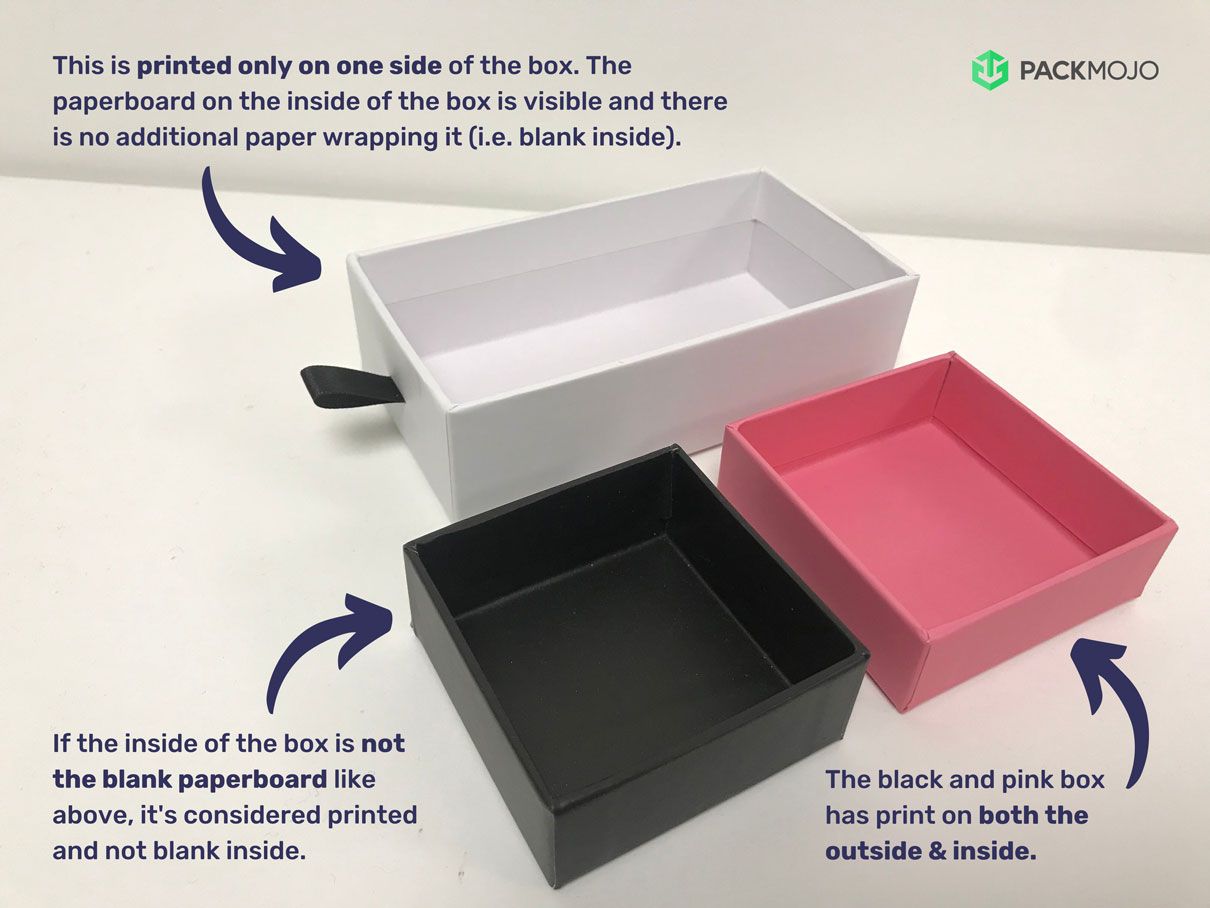Rigid boxes are considered one of the more premium custom boxes on the market. Here, we break down how a rigid box is made so that you can understand the processes behind creating these premium boxes.
How are Rigid Boxes Made?
How are Rigid Boxes Made?
Step 1: Sizing
Rigid boxes start off as a flat paperboard (called a chipboard), usually at least 800gsm thick, where it is cut and scored to its correct size. The dotted lines show where the paperboard will then be folded up.

Step 2: Folding
The sides of the chipboard are folded up and secured to form the base shape of the box.

Step 3: Taping
Once folded, the walls of the chipboard are secured using a piece of tape to hold the basic skeleton of your packaging.

Step 4: Printing
A design is printed onto the substrate layer (the wrap). Before being attached to the chipboard, the substrate layer will get laminated along with other add-ons such as foil stamping or embossing. The substrate is then wrapped and glued around the outer surface of the rigid box.

Step 5: Wrapping
The substrate covers your box tightly and brings your rigid boxes to life. The substrate extends to slightly the interior of the box to ensure you have a clean edge at the opening of the rigid box. Voila!

Rigid Box Examples
Here are a couple of rigid box examples with print on just the outside of the box, and print on both the outside and inside. Here's more information that explains what is meant by printing on one or two sides of your box.
